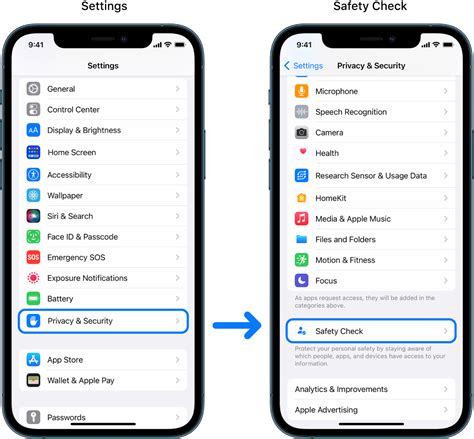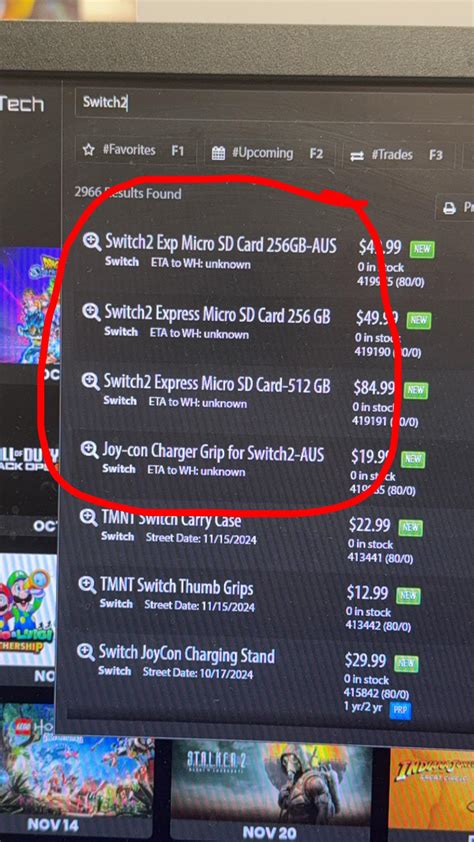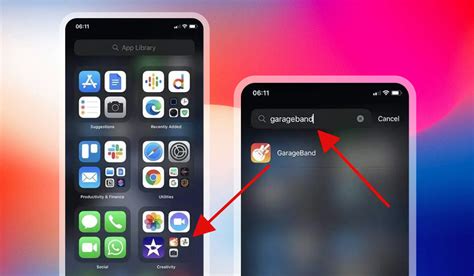
The looming release of iOS 26 may leave millions of iPhone users in the lurch, with speculation mounting that older iPhone models could be excluded from the update. The iPhone XR, iPhone XS, and iPhone XS Max, all powered by the A12 Bionic chip, are rumored to be on the chopping block, raising concerns about device obsolescence and the potential need for users to upgrade their hardware to access the latest features and security updates.
Apple’s iOS updates are highly anticipated, delivering new functionalities, performance enhancements, and crucial security patches. However, each major iOS release also brings the inevitable question of which devices will no longer be supported. For users of older iPhone models, this can mean being left behind, unable to access the newest apps, security features, and overall improvements that come with the latest operating system. The potential exclusion of the iPhone XR, XS, and XS Max from iOS 26 would impact a significant number of users who are still relying on these devices for their daily communication, productivity, and entertainment needs.
The speculation stems from Apple’s historical pattern of dropping support for older devices with each new iOS release. As newer iPhones boast more advanced hardware and capabilities, older models sometimes struggle to keep pace with the demands of the latest software. According to Yahoo Tech, “Apple typically supports its iPhones for around five to six years, but the iPhone XR, XS, and XS Max are approaching that age.” This pattern suggests that these models are nearing the end of their software support lifecycle, leading to predictions that iOS 26 could be the final update for these devices or that they may be excluded altogether.
The implications of being excluded from iOS 26 are significant. Users of unsupported devices will no longer receive software updates, including critical security patches, which can leave their devices vulnerable to malware, hacking attempts, and other security threats. Additionally, new apps and features often require the latest iOS version, meaning that users with older devices may be unable to access or use them. This can lead to a gradual decline in the functionality and usability of the device, ultimately pushing users to consider upgrading to a newer iPhone model.
For many users, the decision to upgrade is not always straightforward. New iPhones can be expensive, and some users may be perfectly happy with the performance of their current devices. The prospect of being forced to upgrade due to software limitations can be frustrating, especially for those who feel their iPhone XR, XS, or XS Max still meets their needs. This potential obsolescence also raises concerns about e-waste, as more and more older devices are discarded to make way for newer models.
The iPhone XR, XS, and XS Max were groundbreaking devices when they were released in 2018. The iPhone XR offered a more affordable entry point into Apple’s ecosystem, featuring a vibrant Liquid Retina display and the powerful A12 Bionic chip. The iPhone XS and XS Max, on the other hand, boasted stunning OLED displays, improved cameras, and enhanced performance. All three models were praised for their speed, responsiveness, and overall user experience. The A12 Bionic chip was a significant leap forward in mobile processing power, enabling advanced features like real-time machine learning and improved graphics performance. These devices have remained popular among users due to their reliability and continued functionality.
The news of potential iOS 26 exclusion has sparked a wave of discussion among Apple enthusiasts and tech commentators. Many are closely watching for official announcements from Apple regarding device compatibility with the new operating system. In the meantime, users of the iPhone XR, XS, and XS Max are left wondering whether their devices will continue to receive support or if they will be forced to upgrade to stay current with the latest software and security features. The situation highlights the ongoing tension between Apple’s desire to innovate and push the boundaries of mobile technology and the need to support its existing user base.
Apple’s Update Strategy: A Closer Look
Apple’s strategy for updating its operating systems is a complex balancing act. On one hand, the company wants to provide the latest features and improvements to as many users as possible. On the other hand, supporting older devices can be technically challenging and resource-intensive. Each new iOS release is designed to take advantage of the latest hardware capabilities, and older devices may simply not have the processing power, memory, or other resources to run the new software effectively.
Apple also faces the challenge of maintaining compatibility with a wide range of apps and services. As developers create new apps and update existing ones, they often target the latest iOS versions to take advantage of new features and technologies. This can leave users with older devices unable to access or use these apps, further diminishing the functionality of their devices.
The decision to drop support for older devices is not taken lightly. Apple carefully considers the performance and capabilities of each device, as well as the number of users who are still using it. The company also takes into account the cost of supporting older devices, including the resources required to develop and test software updates.
Historically, Apple has been more generous than many of its competitors in terms of software support. Android devices, for example, often receive updates for only two or three years, while iPhones typically receive updates for five or six years. This longer support window is one of the reasons why iPhones tend to hold their value better than Android devices.
However, even Apple’s support window is finite. As newer iPhones come out with more advanced hardware and software capabilities, older models eventually reach the end of their lifecycle. The potential exclusion of the iPhone XR, XS, and XS Max from iOS 26 is a reminder of this reality.
The Impact on Users: What It Means to Be Left Behind
For users of the iPhone XR, XS, and XS Max, the potential exclusion from iOS 26 raises a number of concerns. The most immediate concern is the loss of security updates. Without regular security patches, these devices will become increasingly vulnerable to malware, hacking attempts, and other security threats. This could put users’ personal data, including their contacts, photos, and financial information, at risk.
Another concern is the loss of access to new apps and features. As developers target the latest iOS versions, users with older devices may be unable to access or use these apps. This could limit their ability to stay connected with friends and family, access important information, or use the latest productivity tools.
The overall performance of the device may also decline over time. As newer apps and services are designed for the latest iOS versions, they may not run as smoothly on older devices. This could lead to slower performance, longer loading times, and other frustrations.
For some users, the exclusion from iOS 26 may be the final straw that pushes them to upgrade to a newer iPhone model. However, this is not always an easy decision. New iPhones can be expensive, and some users may be perfectly happy with the performance of their current devices. The prospect of being forced to upgrade due to software limitations can be frustrating, especially for those who feel their iPhone XR, XS, or XS Max still meets their needs.
The Environmental Implications: E-Waste and Sustainability
The potential obsolescence of the iPhone XR, XS, and XS Max also raises concerns about e-waste. As more and more older devices are discarded to make way for newer models, the amount of electronic waste generated each year continues to grow. E-waste contains hazardous materials, such as lead, mercury, and cadmium, which can pollute the environment and pose risks to human health.
Apple has made efforts to reduce its environmental impact, including designing more durable products, using recycled materials, and offering trade-in programs for older devices. However, the company still faces the challenge of managing the environmental impact of its products at the end of their lifecycle.
The potential exclusion of the iPhone XR, XS, and XS Max from iOS 26 highlights the need for more sustainable practices in the electronics industry. This includes designing products that last longer, making them easier to repair, and providing better options for recycling and reuse. Consumers can also play a role by taking care of their devices, repairing them when possible, and recycling them responsibly when they are no longer needed.
Alternatives for Users: What to Do if Your iPhone Is Excluded
If your iPhone XR, XS, or XS Max is excluded from iOS 26, you have several options to consider:
-
Continue Using Your Device: You can continue using your device as is, but be aware that you will no longer receive security updates. This means that your device will be more vulnerable to malware, hacking attempts, and other security threats. You should also be cautious about downloading apps from untrusted sources and avoid clicking on suspicious links.
-
Upgrade to a Newer iPhone: You can upgrade to a newer iPhone model to get the latest features, performance enhancements, and security updates. Apple offers a variety of iPhone models at different price points, so you can choose one that fits your budget and needs. You may also be able to trade in your older iPhone to get a discount on a new one.
-
Explore Third-Party Security Software: While not a perfect solution, you might explore third-party security software options designed to provide some level of protection against malware and other threats on older iOS versions. However, be cautious and research thoroughly before installing any such software, as some may be ineffective or even malicious. Ensure the software is reputable and has positive reviews from trusted sources.
-
Consider a Custom ROM (Advanced Users Only): This is a more technical solution that involves installing a custom version of iOS on your device. Custom ROMs can sometimes provide security updates and new features to older devices, but they are not officially supported by Apple and may void your warranty. This option is only recommended for advanced users who are comfortable with the technical aspects of installing and maintaining custom software.
-
Use Your Device for Specific Tasks: If you are concerned about security, you can limit your use of the device to specific tasks that don’t involve sensitive information. For example, you could use it as a dedicated music player, e-reader, or gaming device. Avoid using it for online banking, shopping, or other activities that require you to enter personal or financial information.
-
Donate or Recycle Your Device Responsibly: If you decide to upgrade to a newer iPhone, consider donating your old device to a charity or recycling it responsibly. Many organizations accept donations of used electronics, and Apple offers a trade-in program that allows you to recycle your old device for a discount on a new one.
The Future of iOS: What to Expect in iOS 26
While the focus is currently on which devices may be excluded from iOS 26, it’s also important to consider what new features and improvements the update may bring. Apple has not yet announced any details about iOS 26, but based on past releases, we can expect it to include:
-
Enhanced Security: Security is always a top priority for Apple, and iOS 26 is likely to include new security features to protect users from malware, hacking attempts, and other threats.
-
Improved Performance: Apple typically optimizes each new iOS release to improve performance on supported devices. This could include faster app loading times, smoother animations, and better battery life.
-
New Features: iOS 26 may include new features for apps like Photos, Messages, and Maps. Apple often adds new functionalities to its core apps to enhance the user experience.
-
User Interface Improvements: Apple may make changes to the user interface to make it more intuitive and user-friendly. This could include new icons, menus, and navigation elements.
-
Accessibility Enhancements: Apple is committed to making its products accessible to everyone, and iOS 26 is likely to include new accessibility features for users with disabilities.
-
Integration with New Hardware: If Apple releases any new hardware devices in the fall of 2024, iOS 26 will likely include features that are designed to take advantage of the new hardware capabilities.
Conclusion: Navigating the iOS Update Landscape
The potential exclusion of the iPhone XR, XS, and XS Max from iOS 26 highlights the challenges and trade-offs involved in Apple’s software update strategy. While the company strives to provide the latest features and improvements to as many users as possible, it must also balance the need to support older devices with the desire to innovate and push the boundaries of mobile technology.
For users of older iPhone models, the prospect of being left behind can be frustrating. However, it’s important to understand that Apple’s decision to drop support for older devices is not taken lightly. The company carefully considers the performance and capabilities of each device, as well as the number of users who are still using it.
Ultimately, the decision of whether to upgrade to a newer iPhone is a personal one. If you are happy with the performance of your current device and are willing to accept the risks associated with using an unsupported operating system, you can continue using it as is. However, if you want to stay current with the latest features and security updates, you may need to consider upgrading to a newer model. Regardless of your decision, it’s important to be informed about the potential risks and benefits of each option.
Frequently Asked Questions (FAQ)
-
Which iPhone models are rumored to be excluded from iOS 26? The iPhone XR, iPhone XS, and iPhone XS Max, all powered by the A12 Bionic chip, are the models most frequently speculated to be excluded from the iOS 26 update.
-
What are the risks of using an iPhone that no longer receives iOS updates? The primary risk is a lack of security updates, making the device vulnerable to malware, hacking, and other security threats. Additionally, newer apps and features may not be compatible, leading to decreased functionality over time.
-
How long does Apple typically support its iPhones with software updates? Apple typically supports its iPhones for around five to six years. The iPhone XR, XS, and XS Max were released in 2018, placing them at the edge of this support window.
-
If my iPhone is excluded from iOS 26, can I still use it for basic functions like calls and texts? Yes, you can still use it for basic functions. However, you won’t receive security updates or be able to use new apps or features that require iOS 26. The functionality of existing apps may also degrade over time as developers update them for newer iOS versions.
-
What are my options if my iPhone XR, XS, or XS Max is not compatible with iOS 26? You have several options: continue using your device without updates (at your own risk), upgrade to a newer iPhone model, explore third-party security software (with caution), consider a custom ROM (for advanced users only), or limit your device’s use to non-sensitive tasks. You can also donate or recycle your device responsibly.









